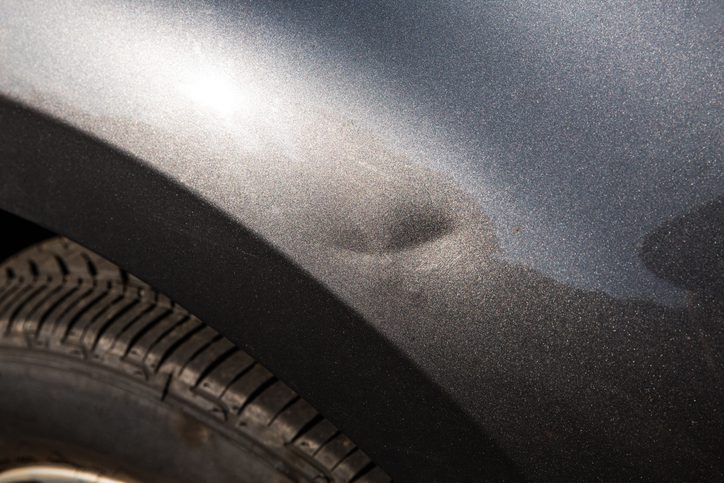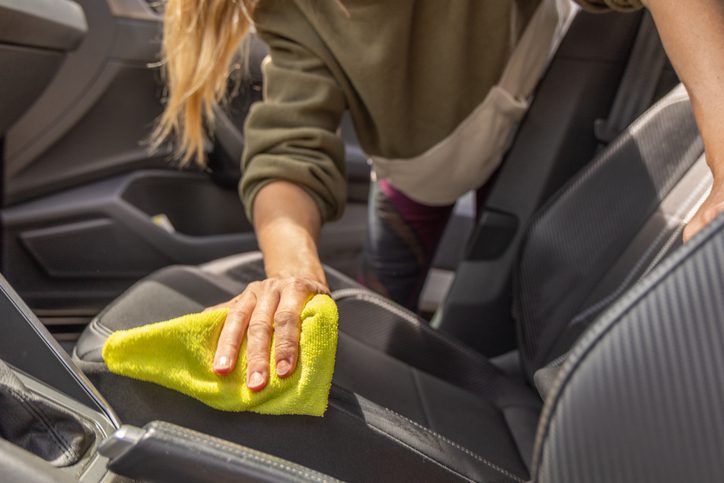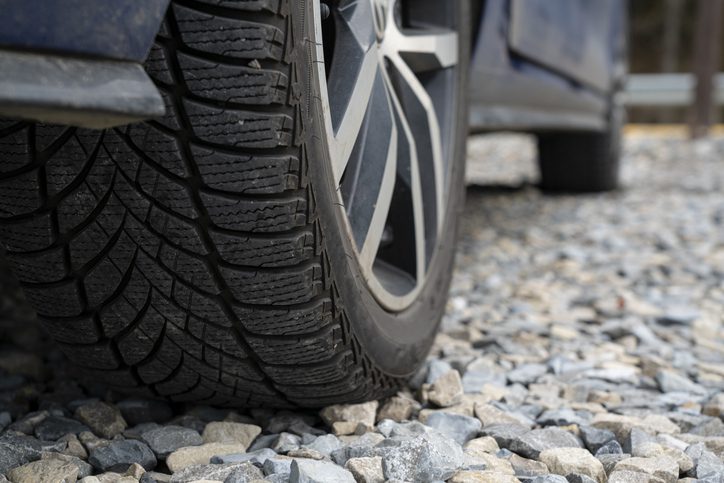Most of us have experienced that sinking feeling the first time you notice a scratch on your car from a rolling shopping cart or a car door flung open. Or maybe you accidentally backed into a metal post or scraped against the side of your garage door.
Paint scratches and dents add to the wear-and-tear look nobody wants for their ride. And a smelly, stained interior can be unsightly and embarrassing, especially when passengers hop in the car.
There’s good news, though. You don’t have to be an auto repair expert or detailing professional to fix many minor vehicle flaws. There are some imperfections you can fix up by yourself.
Just follow the tips below to get your car or truck back on the road and looking beautiful.
How to Remove Minor Scratches
The first step to removing minor scratches is to assess how deep the scratch is. If the scratch is slight and only affects the clear coat, which is the transparent, glossy coat of paint covering the paint and primer, you may be able to fix it with a small amount of toothpaste.
First, wash the area with soap and water. Then slightly dampen a soft microfiber cloth and use a pea-sized amount of standard (not gel) toothpaste, which contains a tiny amount of grit. Rub the scratch in circular motions, taking care not to further scratch the surface, until the scratch is no longer visible. Then dry the area with a clean microfiber cloth.
If that doesn’t work, try removing the scratch with the following steps.
1. Clean the scratched area using a car-grade soap sold (found at auto parts stores) and cool water. Dry with a clean, soft microfiber cloth.
2. Use, gentle, circular motions to apply a small amount of polishing compound or scratch remover with a microfiber cloth, recommends Joe Giranda, director of sales and marketing at CFR Classic, a car shipping and relocation company headquartered in Paramount, California.

“Using gentle circular motions, buff the area after the scratch is no longer visible,” advises Giranda. “For deeper scratches, use a fine brush or toothpick to apply touch-up paint that matches your vehicle’s color code. Finish by blending with polish and protective wax.”
If the scratch reaches the base coat or metal, you may want to take the car in to an auto shop for a minor paint touch-up. However, that repair could run anywhere from around $600 to several hundred dollars or more, depending on the size of the affected area and the type of paint used.
If you want to try to DIY the touch-up, here’s how to do it: Clean the area and apply the original equipment manufacturer’s recommended color touch-up paint in thin layers, recommends Parham Koukia, lead detailer and operations manager at Panda Hub, an auto detailing business in Toronto, Ontario.
“Once cured, lightly wet-sand with 2000-grit sandpaper and finish with a polishing compound to blend the repair with the surrounding paint,” says Koukia.
How to Remove Small Dents
1. Boiling water
This method works if you can reach behind the dent and it’s located on a plastic bumper or other plastic part, and if the paint isn’t damaged. Pour boiling water over the dent and push the dent out from the back until it pops out. Then pour cold water on the area to harden the plastic.
2. Dent repair kit
You may be able to repair a small dent by using a dent removal kit purchased online or at auto stores for small dents. These kits typically have a tool that covers the dent from side-to-side and include various suction attachments in different sizes to pop out the dent. Make sure you read the instructions carefully before starting the repair.

How to Remove Interior Stains
Steam cleaning is one of the safest and most effective ways to lift stains from upholstery and carpets, says Koukia. “Steam cleaning loosens grime without harsh chemicals and eliminates the bacteria that cause odor,” he says.
You can also use baking soda and water to remove car interior stains from cloth and vinyl seats using the following steps from Arm & Hammer.
- Vacuum all car seats.
- Create a paste of one part water and two parts baking soda.
- Spot test an area that’s not highly visible to check for color fastness and make sure water mark stains don’t remain.
- Apply the paste to the stain with your fingers or a brush. You can also work in the paste using a toothbrush, sponge or scrub brush in circular motions.
- Let the paste work on the stain for 30 seconds to five minutes. It may take up to 30 minutes for tougher stains.
- Rinse and wipe away the paste with a damp (not soaked) towel.
- Wipe the area dry with a soft, clean cloth.
You can also try the “dip and dab” method by dipping your cloth or sponge into baking soda and scrubbing stained areas. Then rinse with a clean cloth and dry with a separate cloth.

How to Remove Interior Smells
The first step to remove interior odors from your vehicle to check under the seats and around the interior for dropped food and spilled drinks or sauces. Remove those odor sources before cleaning and deodorizing the interior.
Koukia recommends sprinkling baking soda across your car’s seats and carpets. “Let it sit overnight and vacuum it up,” Koukia says. “In my experience, this is the go-to solution anyone can use before diving into deep cleaning.” If you can’t let the baking soda sit overnight, give it at least 15 minutes.
“For heavy smells caused by food spills, pet accidents or mildew, use enzyme-based cleaners to break down the organic matter and eliminate the source,” says Koukia. “Do not rely on air fresheners, as they just mask the smell for a few hours instead of treating the root cause.”

It’s also a good idea to check whether your cabin air filter located in the back of your glove compartment needs to be replaced. The cabin air filter collects dust, pollen and other contaminants that can stink up your car. Signs the air filter may need changing include foul smells coming from cabin vents, air conditioner vents not blowing as hard, sneezing more than usual while driving and visible dirt and debris on the filter or the car interior.
Protecting Your Car Starts with Insurance
As always, make sure your car insurance is up-to-date as it may cover larger repair costs if you need auto repair shop expertise to get the job done.







Thank you for sharing this information, it’s very helpful.
i’ve been a customer of the Hartford for many years. This is the first time that you came up with an article that I was really interested in. This article gave me a tip or two that I didn’t know about. Thanks.
Some good suggestions! Thanks
Really useful information!
Good information
Thanks for discussing the cabin air filter!
This information provides an excellent way to repair a lot of different types of scratches based on the depth into the body paint that appears extremely valid and also dents this is great info
Helpful
Very good advice on how to keep your car in good shape.
Yes I can use all these methods, been talking about having my car detailed for a few hundred dollars, but now I feel like I can do this myself
Easy read and DYI sound easy to do, mostly the interior ones anyway. Thank you for this listing!